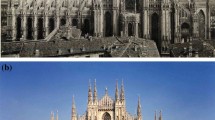Abstract
The Mw 6.9 earthquake of 30.10.2020 that took place to the immediate north of the island of Samos in the Aegean Sea was an important event. It was widely felt in the surrounding areas of both Turkey and Greece. It was an almost pure normal earthquake and recorded by a significant number of strong motion stations deployed in the region. The event caused a small-scale tsunami that led to some damage in the shores of Sığacık, a neighbourhood of the Izmir province to the north of the earthquake source zone. Regional distribution of structural damage was parallel to the ground motion levels. However, the city of Izmir, the third largest city of Turkey and about 60 to 70 km to the north of the epicentral area was severely affected. 117 lives were lost and more than 500 buildings either collapsed or received heavy damage. The majority of collapses and casualties were in the Bayraklı district of İzmir, known for its poor site conditions. This paper reports on a survey that we carried out soon after the earthquake in central Izmir. It relies on laser vibrometry, which was used to measure the dominant frequencies of a series of buildings in low, moderate and heavy damage state. Measurements were carried out remotely in 38 buildings. General structural characteristics of the buildings, such as number of stories, height, structural system and earthquake damage state were visually assessed. The dominant frequencies of vibration were estimated through analysis of vibration data. The fact that the majority of the buildings were more or less similar provided a unique opportunity for comparing their measured natural frequencies of vibration under different levels of damage.
Access this chapter
Tax calculation will be finalised at checkout
Purchases are for personal use only
Similar content being viewed by others
References
Yoon SW, Joo YK (2003) Natural periods of reinforced concrete apartments for serviceability design. J Archit Inst Korea 19:3–10
ASCE (American Society of Civil Engineers) (2011) ASCE/SEI 7-10. Minimum design loads for buildings and other structures; ASCE (American Society of Civil Engineers): Reston, VA, USA
Lagomarsino S (1993) Forecast models for damping and vibration periods of buildings. Wind Eng Ind Aerod 48:221–239
Satake N, Suda KI, Arakawa T, Sasaki A, Tamura Y (2003) Damping evaluation using full-scale data of buildings in Japan. J Struct Eng 129:470–477
Architectural Institute of Korea (2009) Korean building code—structural. Seoul, Korea, Ministry of Construction and Transportation of Korea
Ha Taehyu (2020) Damping and natural period evaluation of tall RC buildings using Full-Scale data in Korea. Aplied Sci 10(5):1568
EN 1991-1-4 (2005) Eurocode 1: actions on structures—Part 1–4: general actions—wind actions. CEN, European committee for standardization, Brussels, Belgium
Fritz WP, Jones NP, Igusa T (2009) Predictive models for the median and variability of building period and damping. J Struct Eng 135(5):576–586
Acknowledgements
The field measurements were possible through the financial support provided by Boğaziçi University under project BAP - Remote Structural Monitoring Via Laser Vibrometry (project no. 11717, project code 18TS2) and by technical and logistical support of Mr Ahmet Korkmaz and Mr Nafiz Kafadar. All contributions are gratefully acknowledged.
Author information
Authors and Affiliations
Corresponding author
Editor information
Editors and Affiliations
Rights and permissions
Copyright information
© 2021 The Author(s), under exclusive license to Springer Nature Switzerland AG
About this paper
Cite this paper
Çakti, E., Ertürk, S.Ö. (2021). Experimental Evidence for Structural Damage During the 30.10.2020 Samos-Sığacik Earthquake by Laser Vibrometry. In: Rainieri, C., Fabbrocino, G., Caterino, N., Ceroni, F., Notarangelo, M.A. (eds) Civil Structural Health Monitoring. CSHM 2021. Lecture Notes in Civil Engineering, vol 156. Springer, Cham. https://doi.org/10.1007/978-3-030-74258-4_64
Download citation
DOI: https://doi.org/10.1007/978-3-030-74258-4_64
Published:
Publisher Name: Springer, Cham
Print ISBN: 978-3-030-74257-7
Online ISBN: 978-3-030-74258-4
eBook Packages: EngineeringEngineering (R0)




